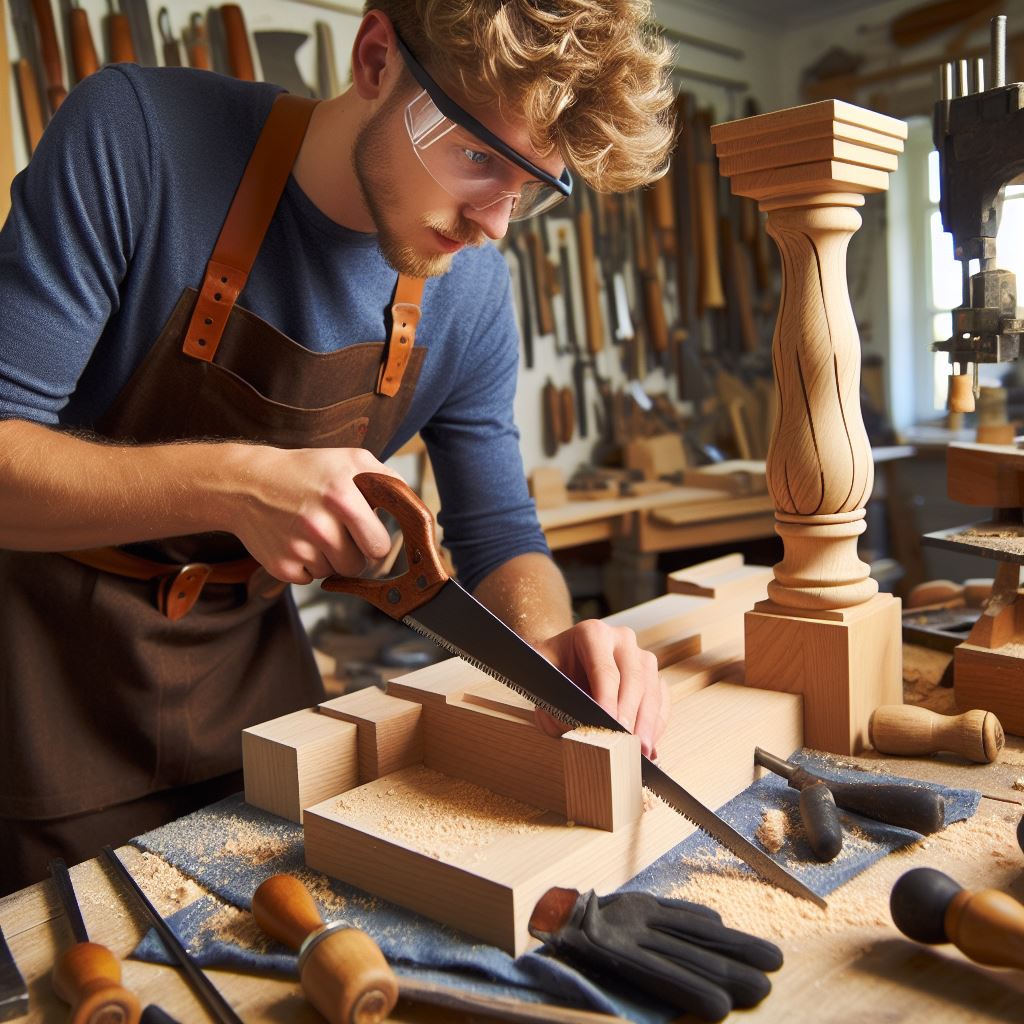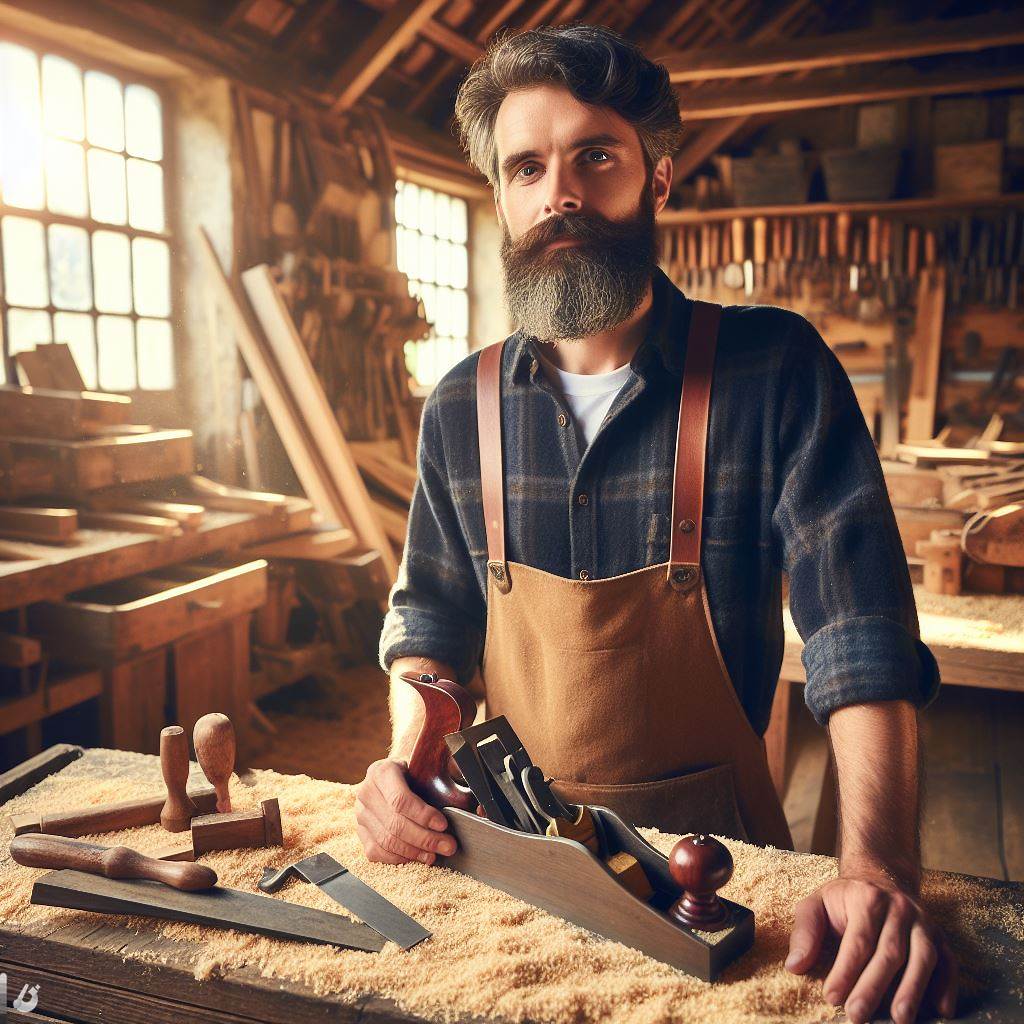Introduction
Joinery is an essential discipline in the UK, playing a crucial role in construction and woodworking. Traditional joinery techniques have been practiced for centuries, emphasizing craftsmanship and precision.
However, with the advancements in technology, joinery is undergoing a significant transformation that disrupts conventional notions.
The incorporation of tech tools, such as computer-aided design software, enhances precision and efficiency in joinery.
Digital fabrication technologies like CNC machines enable precise cutting, shaping, and carving of wood.
Traditional joinery techniques often required years of practice, but now, technology allows for faster skill acquisition.
Technology also expands design possibilities in joinery, allowing for intricate and complex patterns and details.
3D printing technology enables the creation of custom joinery components with intricate designs. This fusion of craftsmanship and technology fosters innovative and unique joinery projects.
The adoption of technology in joinery also improves safety, reducing the risk of accidents and injuries.
Power tools and automated machinery ensure tasks that were once arduous or hazardous are now safer and more efficient.
This not only protects the craftsmen but also ensures better quality and precision in the final products.
However, despite the benefits, there are concerns about the impact of technology on traditional joinery skills.
Some argue that reliance on technology may devalue the craftsmanship and the knowledge built over generations.
While technology is undoubtedly transforming joinery, it still relies on the expertise of skilled craftsmen.
In general, technology is revolutionizing the craft of joinery in the UK, improving precision, safety, and design possibilities.
Embracing technology in joinery allows for innovative and unique projects, while still valuing traditional craftsmanship.
Personalized UK Career Consulting
Receive tailored career guidance designed just for you. Get actionable steps and expert support to boost your career in 1-3 days. Take control of your career now.
Get StartedJoinery’s future lies in the harmonious integration of technology and the preservation of time-honored techniques.
Traditional Joinery in the UK
Definition of joinery and its historical importance in the UK
Joinery in the UK refers to the skilled practice of crafting furniture, cabinets, and other wooden items by joining different pieces of wood together.
It has a rich historical significance in the country, dating back centuries.
Overview of traditional joinery techniques
- Hand tools used in joinery: Joiners in the UK traditionally rely on a wide range of hand tools, such as chisels, planes, saws, and mallets, to shape and manipulate wood.
- Common joinery joints and their applications: Traditional joinery techniques include various types of joints, such as dovetail joints, mortise and tenon joints, and tongue and groove joints.
These joints provide strength, stability, and aesthetic appeal to the final piece.
Highlighting the skill and craftsmanship involved in traditional joinery
Traditional joinery in the UK is a meticulous craft that requires exceptional skill and craftsmanship. It involves precise measurements, attention to detail, and a deep understanding of wood properties.
Joiners meticulously select wood species, considering factors like strength, durability, and appearance. They work with precision to ensure a perfect fit for each joint, resulting in seamless and sturdy furniture pieces.
The artistry of traditional joinery lies in the ability to create custom-made, unique pieces tailored to the client’s needs. Joiners bring ideas to life by combining their technical expertise with creativity.
The mastery of traditional joinery techniques is typically passed down from generation to generation. These skills have been the cornerstone of the woodworking industry in the UK, contributing to its rich heritage.
However, with the advent of technology, the traditional joinery craft is undergoing transformation.
Technological Advancements in UK Joinery
Introduction to technology’s impact on traditional joinery
The integration of technology into traditional joinery practices is revolutionizing the craft in the UK. Advancements in machinery, software, and automation are changing how joiners approach their work.
Utilization of power tools and machinery
Power tools and machinery have streamlined joinery processes, increasing efficiency and precision.
Sophisticated tools like CNC (Computer Numerical Control) machines are used for complex wood-cutting tasks, ensuring accurate and repetitive results.
Adoption of CAD software and 3D modeling
Joiners are now using Computer-Aided Design (CAD) software and 3D modeling to design and visualize their creations.
These digital tools aid in precision planning, material optimization, and allowing clients to visualize the final product before production begins.
Integration of automation in joinery processes
Automation has brought significant changes to joinery workshops. Robotic systems and machines can execute repetitive tasks, such as sanding and finishing, with speed and consistency, reducing manual labor and improving productivity.
Your Dream Job Starts with a Perfect CV
Get a tailored CV and cover letter that captures your unique strengths and stands out in your industry. Let us help you make an unforgettable first impression.
Get StartedEnhanced precision and efficiency
The incorporation of technology in joinery has resulted in higher levels of precision and efficiency.
The use of laser cutters and advanced measuring devices ensures accurate cuts and joints, reducing material waste and increasing overall productivity.
Preserving the essence of traditional craftsmanship
While technology has undoubtedly impacted traditional joinery, it is essential to maintain the essence of craftsmanship.
Many joiners continue to blend traditional techniques with technological advancements, creating a harmonious balance between the old and the new.
In essence, traditional joinery in the UK holds historical significance and showcases exceptional skill and craftsmanship.
However, with the integration of technology, the craft is evolving, incorporating power tools, CAD software, and automation.
While these advancements enhance precision and efficiency, it is crucial to preserve the essence of traditional craftsmanship for a thriving joinery industry in the future.
Read: The Psychology of a Successful Builder
Emergence of Technology in Joinery
Introduce the concept of technology infiltrating joinery practices
In recent years, technology has made its way into the traditional craft of joinery, bringing about significant changes and innovations.
Joinery, which involves the construction of wooden structures without the use of nails or screws, has been revolutionized by advancements in technology.
Overview of the advancements in joinery technology
Introduction of power tools in the craft
Power tools have had a profound impact on joinery practices, making tasks quicker, more precise, and efficient.
The use of tools such as power saws, drills, and sanders has significantly reduced the time and effort required for shaping and assembling wooden pieces.
Computer-aided design (CAD) software for precision and efficiency
The introduction of computer-aided design software in joinery has revolutionized the precision and efficiency of the craft.
CAD allows joiners to create intricate designs and accurately plan out their projects before even touching a piece of wood.
Optimize Your LinkedIn for Success
Boost your LinkedIn profile with a professional bio, keyword-rich headline, and strategic recommendations that attract recruiters. Stand out from the crowd and get noticed.
Optimize NowThis technology enables them to visualize the end product, make adjustments, and avoid potential errors or wastage.
How technology has revolutionized production capabilities and expanded possibilities
Technology revolutionizes joinery, elevating production capabilities. Advanced machinery and automation enable mass production, ensuring consistent quality and faster turnaround times.
Joinery workshops harness technology for larger volumes of customized pieces with precision and accuracy, expanding possibilities.
CAD software empowers joiners to create intricate designs, pushing the boundaries of traditional craftsmanship and fostering creativity and innovation.
Technology facilitates remote collaboration, allowing joiners to work seamlessly with architects and contractors, expediting processes and reducing errors.
Crucially, technology enhances sustainability. Advanced tools optimize material use, reduce waste, and minimize environmental impact, contributing to more sustainable practices.
In review, technology transforms joinery. Power tools and CAD software streamline processes, expanding production capabilities and fostering creativity.
Collaboration, communication, and sustainability improve, shaping the craft’s future.
Read: Construction Workers’ Rights in the United Kingdom

Benefits of Technological Advancements in Joinery
Increased speed and efficiency in completing joinery projects
- Integration of advanced tools and machinery allows joiners to work faster and complete projects within shorter timeframes.
- Automated processes reduce manual labor, resulting in quicker turnaround times for clients.
Improved precision and accuracy in creating intricate joinery joints
- Computer-aided design (CAD) software enables joiners to create highly accurate and precise measurements for complex joinery joints.
- Robotic technology can execute intricate cuts and shapes with unparalleled precision, minimizing errors.
Enhanced safety measures and reduced physical strain on joiners
- Robotic technology and automated machinery help reduce the risk of accidents and injuries for joiners.
- Heavy lifting and physically demanding tasks are delegated to machines, minimizing physical strain on joiners.
Customization options and expanded design possibilities
- Advanced technology allows for the customization of joinery products according to individual client preferences.
- Computer-controlled machinery can create intricate and unique designs that were previously challenging or impossible to achieve.
Introduction of sustainable practices and eco-friendly materials
- Newer joinery technologies emphasize the use of sustainable materials such as reclaimed wood and recycled materials.
- Efficient machinery and production methods reduce waste, contributing to a more eco-friendly approach to joinery.
Essentially, technological advancements have brought numerous benefits to the field of joinery.
Increased speed and efficiency, improved precision and accuracy, enhanced safety measures, customization options, and the introduction of sustainable practices have revolutionized the craft.
Joiners today can rely on cutting-edge tools and machinery to deliver high-quality joinery projects with greater ease and versatility.
As technology continues to evolve, the future of UK joinery looks promising, combining traditional craftsmanship with innovative techniques and materials.
Read: Salary Trends for UK Construction Workers
Challenges and Limitations of Technology in Joinery
Expensive costs associated with acquiring and maintaining technology
Implementing new technology in the field of joinery can be financially challenging. The costs of purchasing the machinery, software, and tools required can be exorbitant for small businesses.
Additionally, the expense of regular maintenance and upgrades can add up over time.
Potential loss of traditional skills and craftsmanship
As technology advances, there is a concern that traditional joinery skills and craftsmanship may be lost. With automated machinery taking over tasks, the need for skilled artisans may decrease.
This could result in a decline in the quality of joinery work and a loss of heritage.
Need for ongoing training and skills development to adapt to new technologies
Adapting to new technologies requires constant training and skills development. Joiners need to keep up with the latest advancements and learn how to operate and troubleshoot new machinery and software.
This can be time-consuming and may require additional investment in training programs.
Ethical considerations regarding the use of automated machinery
The use of automated machinery in joinery raises ethical concerns. Some argue that it takes away the human touch and craftsmanship that defines the trade.
Others are concerned about the impact on employment, as machines can potentially replace human workers.
Technology revolutionizes joinery, yet challenges persist. Acquiring and maintaining technology poses financial strain for smaller joinery businesses.
The potential loss of traditional skills is a significant limitation. Automated machinery risks diminishing the artistry and expertise of joiners.
Ongoing training is essential for adapting to new technologies. Joiners must invest time, effort, and potentially finances to stay updated.
Ethical concerns arise with automated machinery depersonalizing the craft. There are worries about the impact on employment and the potential replacement of human workers.
Generally, while technology benefits joinery, challenges include financial strain, potential loss of traditional skills, ongoing training needs, and ethical considerations.
Read: Apprenticeships: Gateway to Construction
Conclusion
Recap the main points discussed
In our exploration of UK joinery, we delved into the transformative impact of technology. Traditional craftsmanship meets cutting-edge tools, ushering in a new era for the age-old trade.
The integration of CNC machines streamlines production, enhancing precision and efficiency. Craftsmen leverage 3D modeling to visualize intricate designs, pushing the boundaries of creativity.
Automated processes reduce human error, ensuring each piece meets exact specifications. Adopting digital platforms revolutionizes customer engagement, allowing for seamless collaboration and customization.
The marriage of craftsmanship and technology opens avenues for a more sustainable future, as innovations in materials and processes emerge.
Emphasize the importance of balancing tradition with technological advancements
While technology propels joinery into the future, it’s crucial to honor and preserve traditional craftsmanship.
The human touch, expertise passed down through generations, is irreplaceable. Artisanal skills and attention to detail remain the backbone of exquisite joinery.
Balancing tradition and technology fosters a harmonious synergy, preserving heritage while embracing innovation.
This delicate equilibrium ensures the soul of joinery endures, even as it evolves in response to contemporary demands.
Closing thoughts on the future of UK joinery and its potential with technology
Looking ahead, the future of UK joinery is promising. Technology serves as a catalyst, not a replacement.
Craftsmen become maestros orchestrating a symphony of tradition and innovation. The melding of time-tested techniques with state-of-the-art tools opens doors to unparalleled possibilities.
As we forge ahead, let’s celebrate the dexterity of the craftsman’s hand and the precision of the machine’s touch.
The evolution of UK joinery, enriched by technology, paints a vivid canvas where the past and the future coalesce, creating masterpieces that stand as a testament to the enduring spirit of craftsmanship.
[E-Book for Sale]
500 Cutting-Edge Tech Startup Ideas for 2024 & 2025: Innovate, Create, Dominate
$19.99 • 500 Tech Startup Ideas • 62 pages
You will get inspired with 500 innovative tech startup ideas for 2024 and 2025, complete with concise descriptions to help you kickstart your entrepreneurial journey in AI, Blockchain, IoT, Fintech, and AR/VR.




